March 19 stands as one of history’s most eventful days, witnessing the rise and fall of empires, groundbreaking discoveries, and moments that shaped our modern world across centuries of human achievement.

Politics and Government Events on March 19
1920 – United States Senate Rejects Treaty of Versailles
The United States Senate delivered a decisive blow to President Wilson’s foreign policy by rejecting the Treaty of Versailles for the second time. This historic vote kept America out of the League of Nations and marked a return to isolationist policies.
The rejection fundamentally altered the post-World War I international order. America’s absence from the League significantly weakened the organization’s ability to maintain global peace and stability.
1943 – Frank Nitti Commits Suicide at Chicago Central Railyard

Chicago Outfit Boss Frank Nitti ended his life at the Chicago Central Railyard, marking the end of an era in organized crime. His death created a power vacuum within the notorious criminal organization that had dominated Chicago’s underworld.
The suicide occurred as federal authorities intensified their investigation into the Outfit’s operations. Nitti’s death paved the way for new leadership within one of America’s most powerful crime families.
1946 – French Territories Become Overseas Départements
France restructured its colonial empire by transforming French Guiana, Guadeloupe, Martinique, and Réunion into overseas départements. This administrative change granted these territories greater integration with metropolitan France while maintaining their distinct cultural identities.
The reorganization reflected France’s evolving approach to colonial administration in the post-war era. These territories gained enhanced political representation and economic benefits through their new status.
1962 – Algerian War of Independence Ends
The brutal eight-year conflict between France and Algerian independence fighters finally concluded with the signing of the Évian Accords. Over one million people had died in the savage war that transformed both nations forever.
Algeria’s independence marked the end of French colonial dominance in North Africa. The war’s conclusion triggered massive population movements as European settlers fled the newly independent nation.
1979 – House of Representatives Begins C-SPAN Broadcasting
The United States House of Representatives launched a new era of governmental transparency by beginning live television coverage through C-SPAN. This groundbreaking initiative brought the democratic process directly into American living rooms for the first time.
The continuous coverage fundamentally changed how Americans engaged with their government. Politicians now faced constant public scrutiny, transforming legislative behavior and political communication strategies.
1989 – Egyptian Flag Raised at Taba
Egypt regained control of Taba as the Egyptian flag was raised over the strategic Red Sea resort town. This ceremony marked the end of Israeli occupation that had lasted since the Six-Day War in 1967.
The peaceful transfer demonstrated the success of the Egypt-Israel peace treaty signed in 1979. Taba’s return symbolized the possibility of resolving territorial disputes through diplomatic negotiations rather than warfare.
2003 – President Bush Announces Iraq Invasion
President George W. Bush addressed the American nation to announce the beginning of military operations in Iraq. His speech launched what would become one of the most controversial conflicts in American history.
The invasion marked a dramatic shift in Middle Eastern geopolitics and American foreign policy. Bush’s decision would reshape regional power dynamics and influence international relations for decades to come.
2019 – Nazarbayev Resigns as Kazakhstan President
Nursultan Nazarbayev stepped down as President of Kazakhstan after nearly three decades in power. His resignation ended one of the longest-serving presidencies in post-Soviet history and ushered in a new political era.
Senate Chairman Kassym-Jomart Tokayev assumed the presidency as acting leader and eventual successor. The peaceful transition marked a rare example of voluntary power transfer in Central Asian politics.
Military and Naval History on March 19
1921 – Battle of Crossbarry During Irish War of Independence
About 100 Irish Republican Army volunteers successfully escaped encirclement by over 1,300 British forces at Crossbarry, County Cork. This engagement represented one of the largest military operations during the Irish War of Independence.
The IRA’s tactical victory demonstrated their growing military sophistication and ability to outmaneuver superior British forces. The escape boosted republican morale and proved that guerrilla tactics could succeed against conventional armies.
1944 – German Army Occupies Hungary
German forces launched Operation Margarethe, occupying Hungary to prevent the country from switching sides in World War II. This military intervention demonstrated Germany’s desperation to maintain control over its remaining allies.
The occupation marked the beginning of the Holocaust’s final phase in Hungary. German control enabled the systematic deportation of Hungarian Jews, representing one of the war’s most tragic chapters.
1945 – USS Franklin Struck by Japanese Dive Bomber
A Japanese dive bomber scored a devastating hit on the aircraft carrier USS Franklin off the coast of Japan, killing 724 crew members. Despite catastrophic damage, the ship managed to return to the United States under its own power.
The attack occurred during the final months of the Pacific War as American forces prepared for the invasion of Japan. The Franklin’s survival demonstrated American naval engineering excellence and crew determination under extreme conditions.
1945 – Hitler Issues Nero Decree
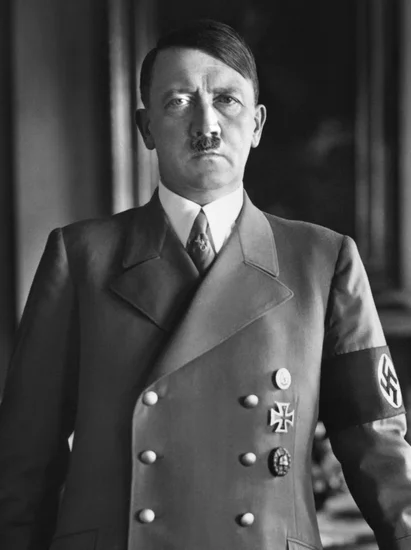
Adolf Hitler issued his infamous “Nero Decree” ordering the destruction of all German infrastructure, industries, and facilities. This scorched-earth policy revealed the dictator’s willingness to sacrifice his own people rather than accept defeat.
The decree demonstrated Hitler’s complete detachment from reality as Allied forces closed in on Berlin. Many German officials ignored the order, recognizing that implementing it would have devastated the German population.
1982 – Argentinian Forces Land on South Georgia Island
Argentinian military forces occupied South Georgia Island, precipitating the Falklands War with the United Kingdom. This bold military action challenged British sovereignty over territories in the South Atlantic.
The landing marked the beginning of a conflict that would reshape both nations’ political landscapes. The war would ultimately strengthen British resolve while leading to the collapse of Argentina’s military government.
2011 – French Air Force Launches Opération Harmattan
The French Air Force initiated military strikes against Libyan government forces, beginning foreign intervention in the Libyan Civil War. This action marked the start of NATO’s campaign to protect civilians from Muammar Gaddafi’s forces.
The intervention followed Gaddafi’s failure to capture the rebel stronghold of Benghazi. French leadership in the operation demonstrated European willingness to act decisively in regional conflicts.
Science and Discovery Milestones on March 19
1965 – SS Georgiana Discovered by Teenage Diver
Teenage diver and pioneer underwater archaeologist E. Lee Spence discovered the wreck of the SS Georgiana, valued at over $50 million. The Confederate cruiser had been destroyed exactly 102 years earlier, making this discovery historically significant.
The Georgiana was considered the most powerful Confederate cruiser of its time. Spence’s discovery revolutionized underwater archaeology and demonstrated how young researchers could make groundbreaking contributions to historical knowledge.
2008 – GRB 080319B Cosmic Burst Observed

Astronomers detected GRB 080319B, a cosmic gamma-ray burst that became the farthest object ever visible to the naked eye. This extraordinary astronomical event lasted only minutes but provided crucial insights into the universe’s most energetic phenomena.
The burst originated from a galaxy billions of light-years away, making it visible across vast cosmic distances. Scientists used this rare observation to better understand stellar collapse and the formation of black holes.
Cultural and Arts Events on March 19
1932 – Sydney Harbour Bridge Opens
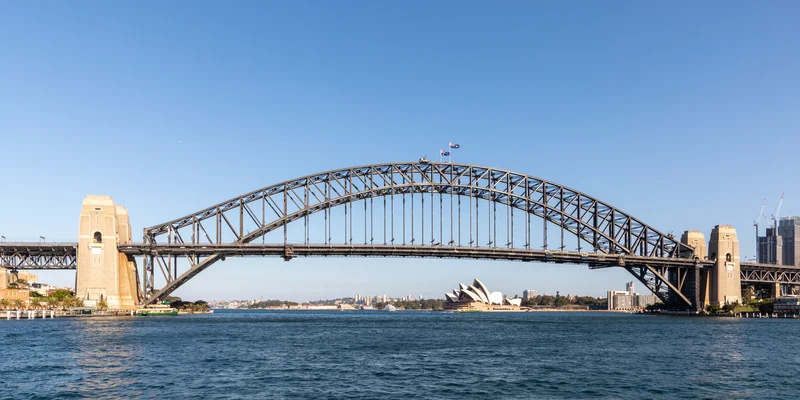
The magnificent Sydney Harbour Bridge officially opened to the public, instantly becoming Australia’s most recognizable landmark. This engineering marvel connected the northern and southern shores of Sydney Harbour, transforming the city’s development.
The bridge’s construction provided employment for thousands during the Great Depression. Its distinctive arch design became a symbol of Australian achievement and continues to dominate Sydney’s skyline today.
1964 – March of the Family with God for Liberty
Over 500,000 Brazilians gathered in São Paulo for the March of the Family with God for Liberty, protesting against President João Goulart’s government. This massive demonstration expressed middle-class fears about communist influence in Brazilian politics.
The march represented one of the largest political demonstrations in Brazilian history. Public opposition revealed through this event contributed to the military coup that would overthrow Goulart just weeks later.
1990 – Ethnic Clashes Begin in Târgu Mureș
Violent ethnic conflicts erupted in Târgu Mureș, Romania, between ethnic Hungarians and Romanians four days after commemorating the 1848 revolutions. These clashes highlighted ongoing tensions between ethnic communities in post-communist Romania.
The violence reflected deeper issues of minority rights and national identity in the newly democratic Romania. The incidents demonstrated how historical grievances could explode into contemporary conflicts during periods of political transition.
2004 – Swedish DC-3 Finally Recovered
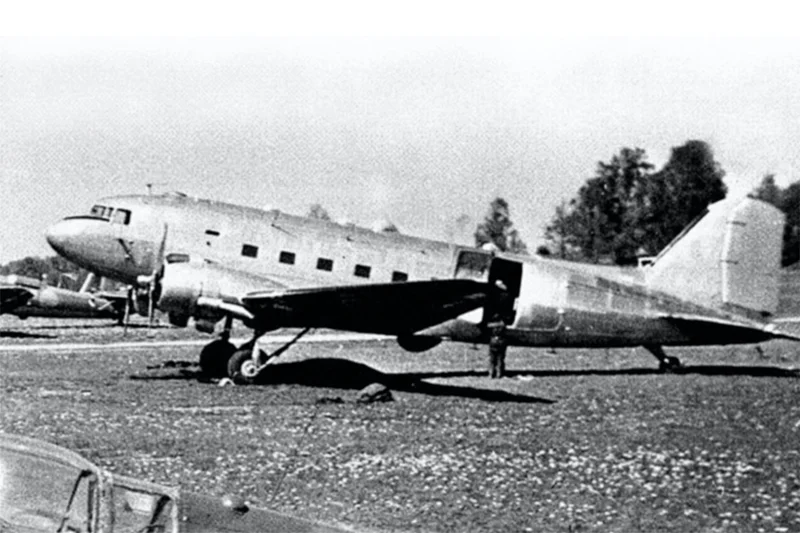
A Swedish DC-3 aircraft shot down by a Soviet MiG-15 in 1952 over the Baltic Sea was finally recovered after decades of searching. The Catalina Affair had remained one of the Cold War’s most enduring mysteries.
The aircraft’s recovery provided closure for families of the victims and revealed important details about Cold War intelligence operations. The discovery demonstrated how advanced underwater technology could solve historical mysteries.
Religious and Social Events on March 19
1918 – US Congress Establishes Time Zones and Daylight Saving Time
The United States Congress officially established time zones and approved daylight saving time as wartime measures. This legislation standardized timekeeping across the nation and introduced the controversial practice of adjusting clocks seasonally.
The changes aimed to conserve energy during World War I by making better use of daylight hours. This decision fundamentally altered how Americans organized their daily lives and work schedules.
1931 – Nevada Legalizes Gambling
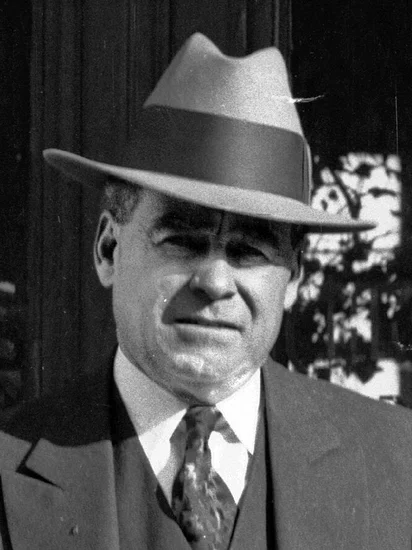
Governor Fred B. Balzar signed groundbreaking legislation legalizing gambling throughout Nevada. This bold decision transformed the state’s economy and established Nevada as America’s gambling capital.
The law’s passage occurred during the Great Depression when states desperately needed new revenue sources. Nevada’s gambling industry would eventually generate billions in tax revenue and create hundreds of thousands of jobs.
1969 – Emley Moor TV Mast Collapses

The 385-meter-tall television transmitter at Emley Moor in the United Kingdom collapsed due to ice accumulation. This dramatic structural failure disrupted television broadcasts across Yorkshire and demonstrated the vulnerability of tall structures to extreme weather.
The collapse affected millions of viewers and highlighted the importance of broadcast infrastructure. Engineers learned valuable lessons about ice loading that influenced future tower designs worldwide.
1998 – Ariana Afghan Airlines Crash
An Ariana Afghan Airlines Boeing 727 crashed while approaching Kabul International Airport, killing all 45 people aboard. This tragic accident highlighted the dangers facing civilian aviation in war-torn Afghanistan.
The crash occurred during Afghanistan’s civil war when the country lacked proper air traffic control and airport maintenance. The disaster demonstrated how prolonged conflict degrades essential infrastructure and threatens civilian safety.
Business and Economic Events on March 19
1958 – Monarch Underwear Company Fire
A devastating fire at the Monarch Underwear Company claimed 24 lives and injured 15 workers. This industrial disaster highlighted ongoing workplace safety issues in American manufacturing and prompted calls for stricter fire prevention regulations.
The tragedy occurred in an era when workplace safety standards remained inadequate in many industries. The fire’s high casualty count demonstrated the need for improved emergency evacuation procedures and building safety codes.
2023 – UBS Acquires Credit Suisse
The Swiss Government brokered an emergency deal for UBS to acquire rival Credit Suisse in an attempt to calm the 2023 banking crisis. This unprecedented intervention prevented a potential collapse of one of the world’s largest banks.
The merger created a banking giant with enormous global influence while eliminating a major competitor. The Swiss government’s decisive action demonstrated how quickly authorities would act to prevent financial system instability.
Transportation and Infrastructure on March 19
2004 – Konginkangas Bus Disaster

A tragic bus accident in Äänekoski, Finland, killed 23 people and injured 14 others in what became known as the Konginkangas bus disaster. This devastating crash highlighted the dangers of winter road conditions in Nordic countries.
The accident prompted comprehensive reviews of bus safety standards and winter driving protocols. Finnish authorities implemented new regulations for public transportation to prevent similar tragedies.
2016 – Flydubai Flight 981 Crashes
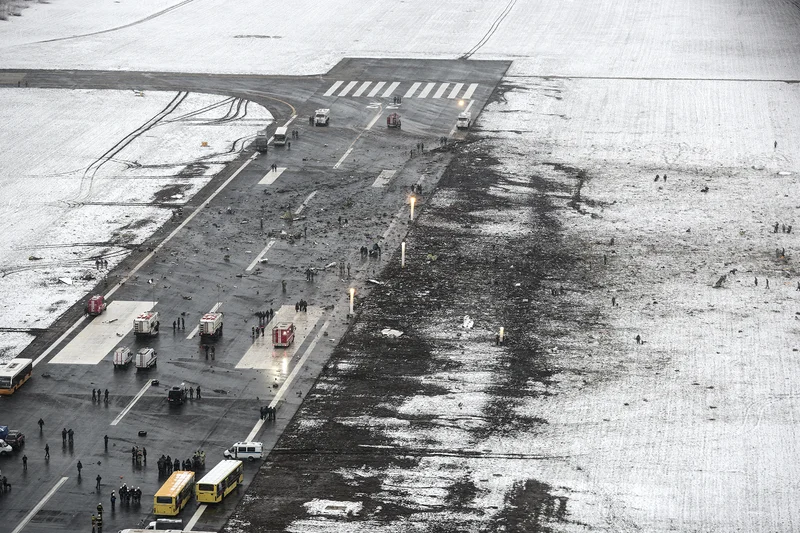
Flydubai Flight 981 crashed while attempting to land at Rostov-on-Don International Airport, killing all 62 people aboard. The accident raised serious questions about airline safety procedures and pilot training standards.
Investigators determined that challenging weather conditions and pilot error contributed to the crash. The tragedy led to enhanced training requirements for pilots operating in difficult weather conditions.
Sports and Recreation on March 19
2004 – Taiwan President Chen Shui-bian Shot
Republic of China President Chen Shui-bian was shot in what became known as the March 19 Shooting Incident, occurring just one day before the presidential election. The assassination attempt shocked Taiwan and raised questions about political violence.
The shooting occurred during a campaign motorcade in Tainan City. Chen’s survival and subsequent election victory sparked controversy about the incident’s impact on voting results and Taiwan’s democratic process.
2013 – Iraq Bombings and Shootings
A coordinated series of bombings and shootings across Iraq killed at least 98 people and injured 240 others. These attacks demonstrated the ongoing instability plaguing the country years after the American invasion.
The violence targeted civilians in markets, mosques, and residential areas. The coordinated nature of the attacks revealed the sophisticated planning capabilities of insurgent groups operating in Iraq.
2016 – Taksim Square Explosion

An explosion in Istanbul’s Taksim Square killed five people and injured 36 others. This terrorist attack targeted one of Turkey’s most famous landmarks and demonstrated the ongoing security threats facing the country.
The bombing occurred during a period of heightened tensions in Turkey. The attack’s location in a major tourist area highlighted how terrorism threatened both public safety and economic stability.
Notable Births on March 19
1905 – Albert Speer, German Architect and War Criminal
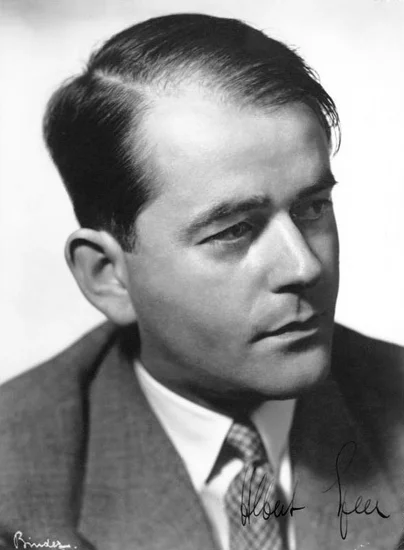
Albert Speer was born in Mannheim, Germany, destined to become Hitler’s chief architect and later a convicted war criminal. His early fascination with monumental architecture would eventually serve Nazi propaganda purposes.
Speer’s architectural vision helped create the grandiose Nazi aesthetic that impressed millions. His later role as Armaments Minister made him complicit in the Holocaust through his use of forced labor.
1921 – Tommy Cooper, British Magician and Comedian

Tommy Cooper entered the world in Caerphilly, Wales, bringing natural comedic timing that would later enchant British audiences. His distinctive appearance and bumbling stage persona masked genuine magical talent.
Cooper’s career spanned television, variety shows, and live performances across Britain. His unique combination of magic tricks gone wrong and infectious laughter made him a beloved entertainment figure.
1928 – Patrick McGoohan, Irish-American Actor
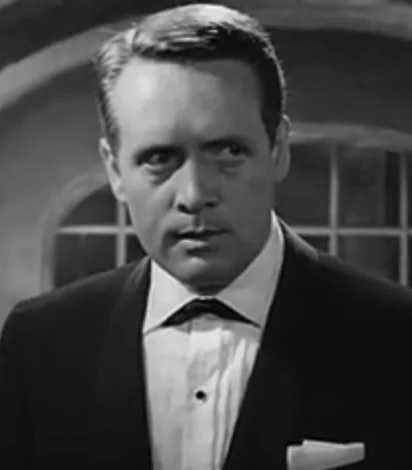
Patrick McGoohan was born in Astoria, Queens, to Irish parents who would shape his strong cultural identity. His early interest in acting led him to pursue drama training in England.
McGoohan’s intense screen presence and distinctive voice made him perfect for complex characters. His starring role in “The Prisoner” television series established him as a cult icon among science fiction fans.
1933 – Philip Roth, American Novelist

Philip Roth was born in Newark, New Jersey, into a working-class Jewish family that would profoundly influence his literary voice. His childhood experiences provided rich material for his future novels.
Roth’s provocative writing explored themes of Jewish-American identity, sexuality, and modern alienation. His prolific career produced numerous acclaimed novels that challenged social conventions and literary expectations.
1936 – Ursula Andress, Swiss Model and Actress

Ursula Andress was born in Ostermundigen, Switzerland, destined to become an international sex symbol and actress. Her natural beauty and charismatic presence would captivate audiences worldwide.
Andress achieved global fame as the first Bond girl in “Dr. No,” establishing a template for future films. Her emergence from the ocean in a white bikini became one of cinema’s most iconic moments.
1947 – Glenn Close, American Actress

Glenn Close was born in Greenwich, Connecticut, into a family that encouraged artistic expression and intellectual curiosity. Her early exposure to theater sparked a lifelong passion for dramatic performance.
Close’s remarkable range allowed her to excel in both sympathetic and villainous roles. Her multiple Oscar nominations and acclaimed stage performances established her as one of America’s finest actresses.
1955 – Bruce Willis, German-American Actor

Bruce Willis was born in Idar-Oberstein, West Germany, to an American father and German mother. His family moved to New Jersey when he was young, where he discovered his love for acting.
Willis became a global action star through his role in the “Die Hard” franchise. His versatility allowed him to succeed in comedy, drama, and action films throughout his career.
1988 – Clayton Kershaw, American Baseball Player

Clayton Kershaw was born in Dallas, Texas, displaying exceptional athletic ability from an early age. His left-handed pitching talent became evident during his high school baseball career.
Kershaw dominated Major League Baseball as one of the greatest left-handed pitchers of his generation. His multiple Cy Young Awards and MVP recognition established him among baseball’s elite performers.
Notable Deaths on March 19
1930 – Arthur Balfour, Former British Prime Minister
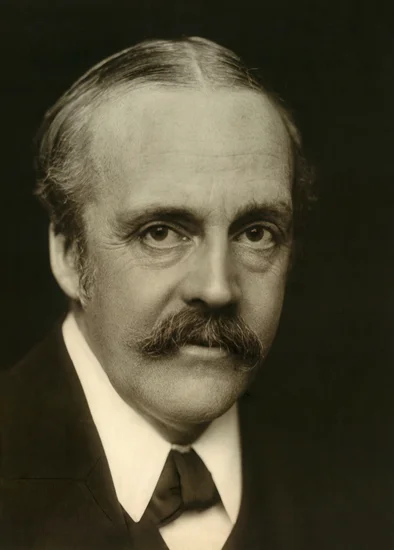
Arthur Balfour, the distinguished Scottish-English politician who served as Prime Minister of the United Kingdom, died after a remarkable political career. His tenure as Prime Minister from 1902 to 1905 marked significant developments in British domestic and foreign policy.
Balfour’s legacy extended far beyond his premiership through his influential role in shaping modern British politics. His diplomatic skills and intellectual approach to governance earned him respect across party lines throughout his long career.
1950 – Edgar Rice Burroughs, American Author

Edgar Rice Burroughs, the creator of Tarzan and other beloved adventure characters, died in Encino, California. His vivid imagination and storytelling ability entertained millions of readers worldwide through his prolific writing career.
Burroughs revolutionized popular fiction by creating enduring characters that transcended literature to become cultural icons. His Tarzan stories alone spawned countless films, television shows, and adaptations that continue entertaining audiences today.
1950 – Norman Haworth, Nobel Prize-Winning Chemist

Norman Haworth, the English chemist and Nobel Prize laureate, died after making groundbreaking contributions to carbohydrate chemistry. His research fundamentally advanced scientific understanding of sugar molecules and their structures.
Haworth’s work on vitamin C synthesis provided crucial insights that improved global health outcomes. His Nobel Prize recognition in 1937 honored discoveries that continued benefiting humanity long after his death.
1982 – Randy Rhoads, American Guitarist

Randy Rhoads, the extraordinarily talented guitarist and songwriter, died tragically in a plane crash at age 25. His innovative playing style and classical music training revolutionized heavy metal guitar techniques.
Rhoads’ work with Ozzy Osbourne created some of metal’s most enduring songs and guitar solos. His death robbed the music world of a prodigious talent whose influence continues inspiring guitarists worldwide.
1987 – Louis de Broglie, Nobel Prize-Winning Physicist

Louis de Broglie, the French physicist and Nobel Prize laureate, died after revolutionizing quantum mechanics with his groundbreaking theories. His work on wave-particle duality fundamentally changed scientific understanding of matter and energy.
De Broglie’s theoretical contributions laid the foundation for modern quantum physics and electron microscopy. His 1929 Nobel Prize recognized discoveries that enabled countless technological advances in electronics and materials science.
1997 – Willem de Kooning, Dutch-American Painter
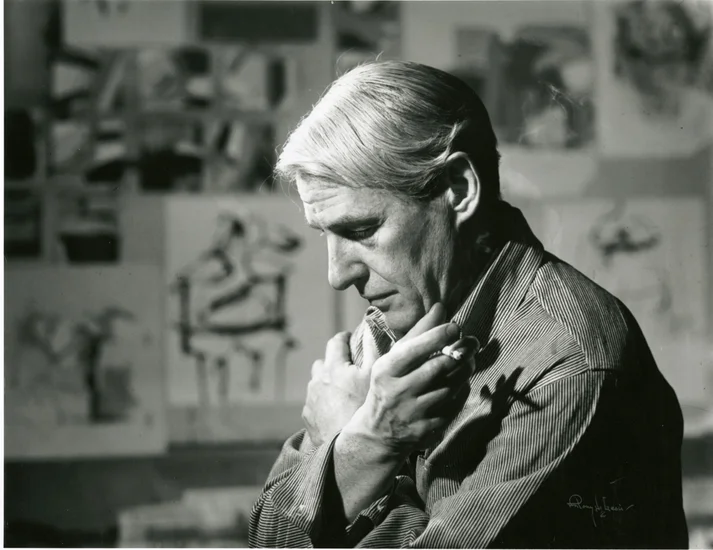
Willem de Kooning, the renowned Dutch-American painter and educator, died after a distinguished career in abstract expressionism. His innovative painting techniques and bold artistic vision influenced generations of artists worldwide.
De Kooning’s work challenged traditional artistic boundaries and helped establish New York as a major art center. His paintings combined abstract and figurative elements in ways that redefined modern artistic expression.
2008 – Arthur C. Clarke, Science Fiction Writer

Arthur C. Clarke, the legendary English science fiction writer, died in Sri Lanka after a career spanning over six decades. His scientific knowledge and imagination produced stories that accurately predicted many technological developments.
Clarke’s novels, including “2001: A Space Odyssey,” inspired countless scientists and engineers to pursue careers in space exploration. His three laws of prediction became fundamental principles for understanding technological progress.
2008 – Paul Scofield, English Actor

Paul Scofield, the acclaimed English actor, died after a distinguished career on stage and screen. His powerful performances and commanding presence made him one of Britain’s most respected theatrical performers.
Scofield’s portrayal of Sir Thomas More in “A Man for All Seasons” earned him an Academy Award and established his international reputation. His dedication to craft and artistic integrity inspired fellow actors throughout his career.
Holidays and Observances on March 19
Saint Joseph’s Day Celebrations

Saint Joseph’s Day represents one of the most significant celebrations in the Roman Catholic and Anglican traditions. This feast day honors the foster father of Jesus Christ and patron saint of workers, fathers, and various countries.
The celebration varies dramatically across different cultures, with elaborate festivals in Italy, Spain, and Latin America. Traditional foods, parades, and religious ceremonies mark this important day in the Christian calendar.
Father’s Day in Multiple Countries

March 19 serves as Father’s Day in Spain, Portugal, Italy, Honduras, and Bolivia, connecting the celebration to Saint Joseph’s Day. This timing emphasizes the religious significance of fatherhood and family relationships in Catholic cultures.
Families gather to honor fathers and father figures through special meals, gifts, and quality time together. The celebration strengthens family bonds and acknowledges the important role fathers play in raising children.
Falles Festival in Valencia

The spectacular Falles festival reaches its climax on March 19 in Valencia, Spain, featuring elaborate papier-mâché sculptures and fireworks displays. This UNESCO-recognized celebration combines artistry, tradition, and community participation in unique ways.
The festival concludes with the ritual burning of the falles monuments, symbolizing renewal and the arrival of spring. Thousands of visitors travel to Valencia to witness this extraordinary display of creativity and cultural heritage.
Return of the Swallows in California
Mission San Juan Capistrano in California observes the legendary return of the swallows on March 19 each year. This natural phenomenon has become a beloved tradition celebrating the connection between wildlife and human communities.
The swallows’ arrival signals the beginning of spring and attracts thousands of visitors to the historic mission. This celebration demonstrates how natural cycles can become integral parts of local culture and identity.
